All the Mid-Engine Corvette Race Car's Hidden Aero Secrets

New Chevrolet Corvette C8.R photos supplied to RoadandTrack.com reveal the brand’s next-generation road car and GT Le Mans racer as an interesting approach to mid-engine design.
With its move from the familiar front-engine solution to a mid-engine chassis layout, the C8.R bids farewell to most of the styling cues that have made its predecessors easily recognizable. Only the retention of the C7/C7.R’s nose and faceted grille profile, along with its rear fender solution, stand out as identifiable carryover items.
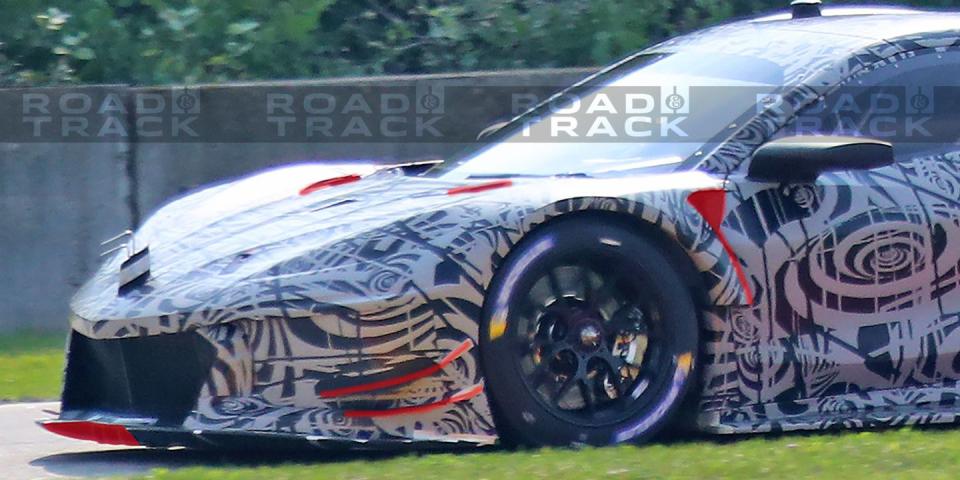
Without the engine dominating the front of the car, the C8.R sports a few obvious differences, most notably in its cooling architecture. Unlike Ford’s GT (below, in yellow), the Pratt & Miller Engineering team that designed the C8.R has avoided using large through-flow openings in the hood to evacuate hot air from the radiators. As best as we can tell, smaller exits at the back of the hood (in red) and possibly up high at the back of the wheel arches (also in red) have been employed to cool an engine that sounds a lot like a twin-turbo V8.
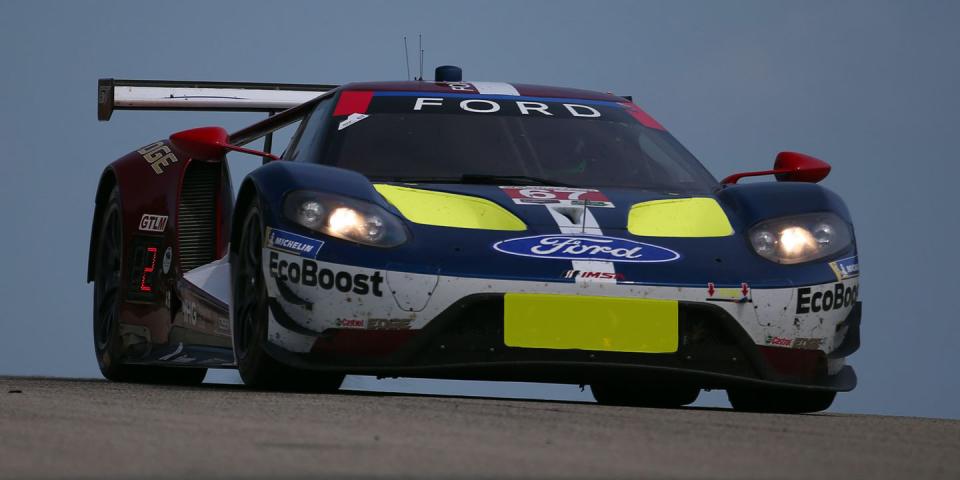
Dual dive planes were fitted for initial testing, and a notched splitter, similar to what Lamborghini uses on its Huracan GT3 (below) serve as departures from the C7.R.
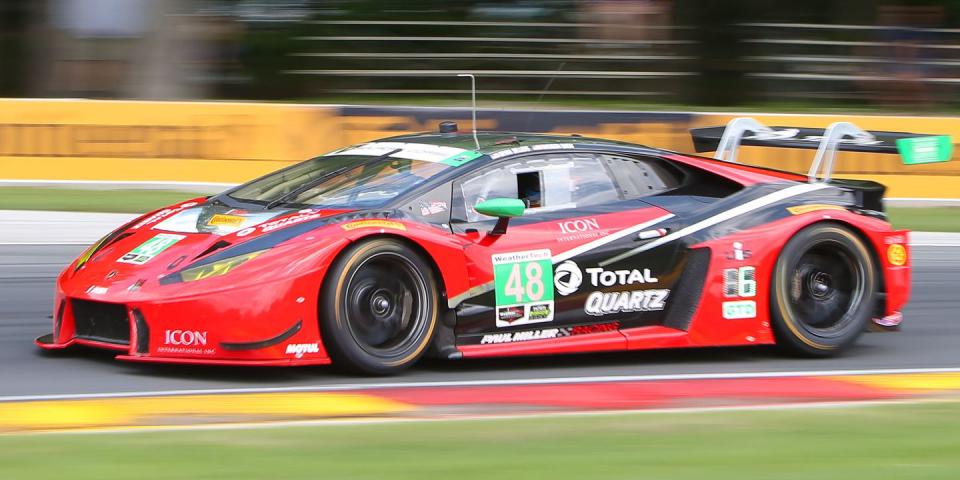
In profile, the C8.R achieves something unique with its rear air intake and fender treatment.

Where its in-state rival in GT Le Mans–and even the lower GT Daytona class–make use of tall ‘Flying V’ apertures to feed turbo intakes and intercoolers, the new Corvette has nearly halved the height of its V.
Take the Ford GT and Acura NSX GT3, in particular, and both employ Vs that connect with the roof.
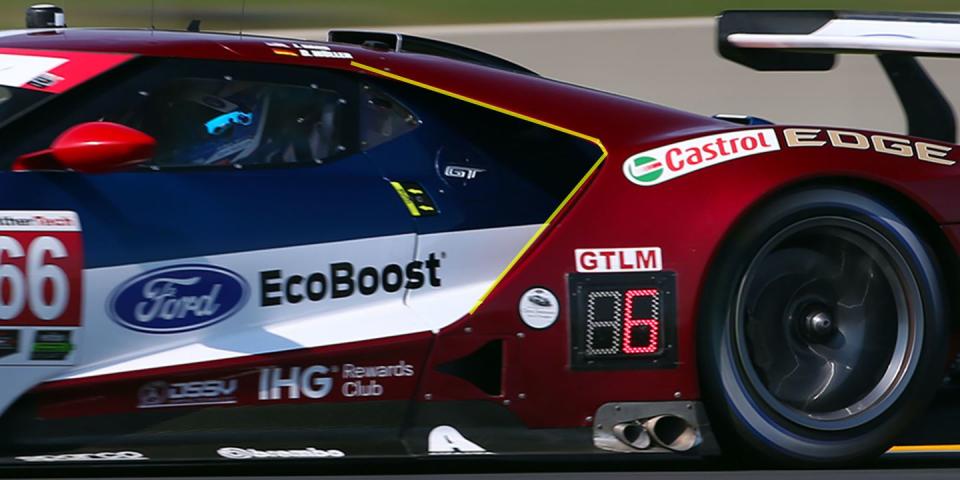

Not so with the C8.R, which condenses the opening to below the window. It allows the Corvette to have an uninterrupted fender formed with a gradual arc that stays connected to the body, and while it’s an assumption, the lack of heavily exposed intake/cooler ancillaries would suggest the Pratt & Miller Engineering team has opened up enough space behind the V to accommodate and tightly package those components. With Ford’s GT, the twin-turbo V6’s air intakes and intercoolers stand off of the body altogether, and with the NSX GT3, its turbo ancillaries extend outward into the laminar airstream by a fair amount.
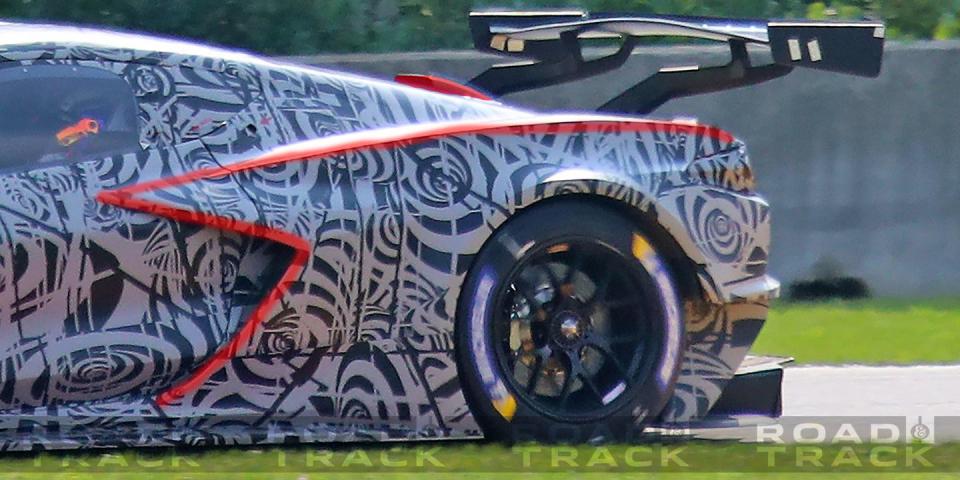
Ferrari’s 488 GTE achieved a similar outcome to the C8.R, but by opposite means. Rather than go the Flying V route, the top of the rear fender is opened to feed the twin-turbo V8’s intake and intercooling needs.

From the C7.R to the C8.R, the radiator inlet has narrowed, the windshield and roof angle isn’t surprisingly different, and the tall rear fenders have been incorporated to the best of Corvette’s ability.
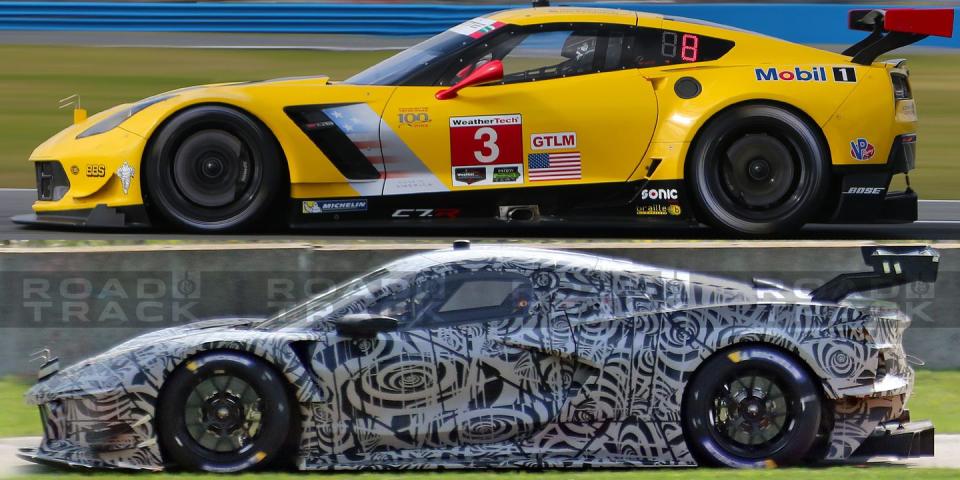
From these photos, we can see that the Corvette C8.R will be radically different than its predecessor. That might just make it a better competitor in both IMSA WeatherTech and the 24 Hours of Le Mans.
('You Might Also Like',)

 Yahoo Autos
Yahoo Autos 